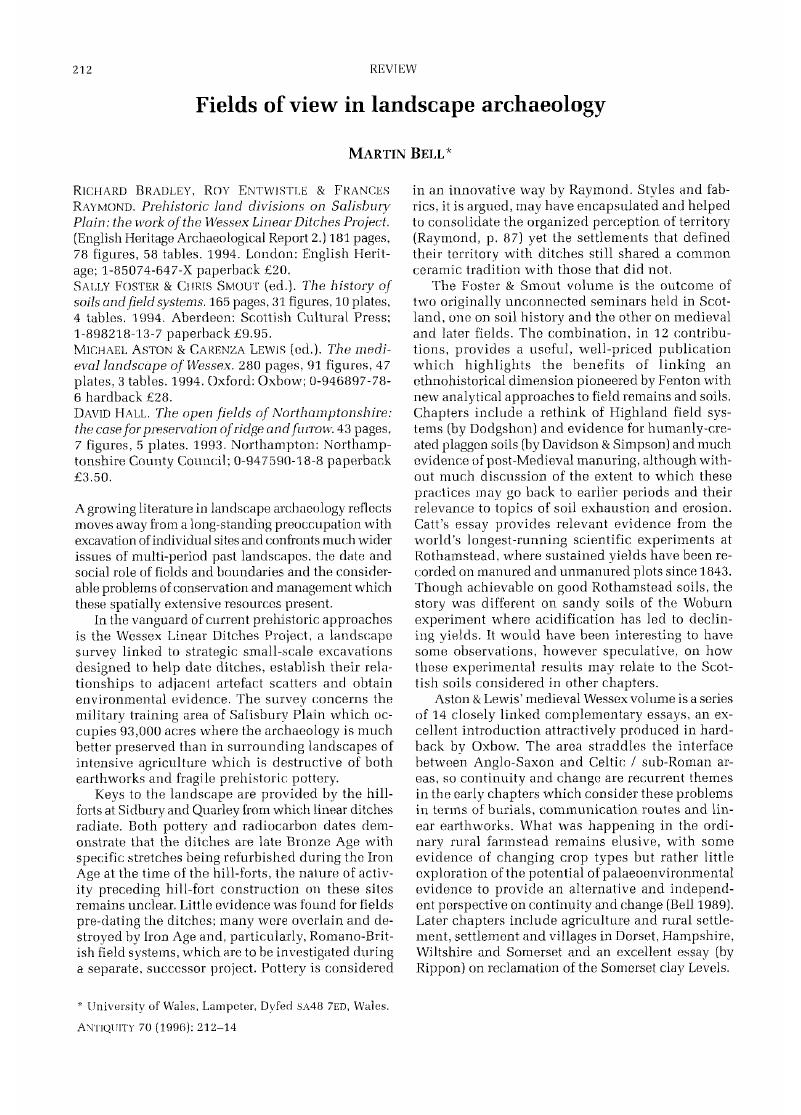No CrossRef data available.
Article contents
Fields of view in landscape archaeology
Published online by Cambridge University Press: 02 January 2015
Abstract
An abstract is not available for this content so a preview has been provided. Please use the Get access link above for information on how to access this content.

- Type
- Review articles
- Information
- Copyright
- Copyright © Antiquity Publications Ltd. 1996
References
Beli, M.G.
1989. Environmental archaeology as an index of continuity and change in the Medieval landscape, in Aston, M., Austin, D. & Dyer, C. (ed.), The rural settlements of medieval England: 269-86. Oxford: Blackwell.Google Scholar
Day, S.P.
1993. Woodland origin and ancient woodland indicators: a case study from Sidlings Copse. Oxfordshire, UK, The Holocene 3: 45–53.Google Scholar
Evans, J.G.
1991. An approach to the interpretation of dryground and wet-ground molluscan taxocenes from central-southern England, in Harris, D. & Thomas, K. (ed.), Modelling ecological change: perspectives from neoecology, palaeoecology und environmental archaeology: 75–89. London: Institute of Archaeology.Google Scholar


